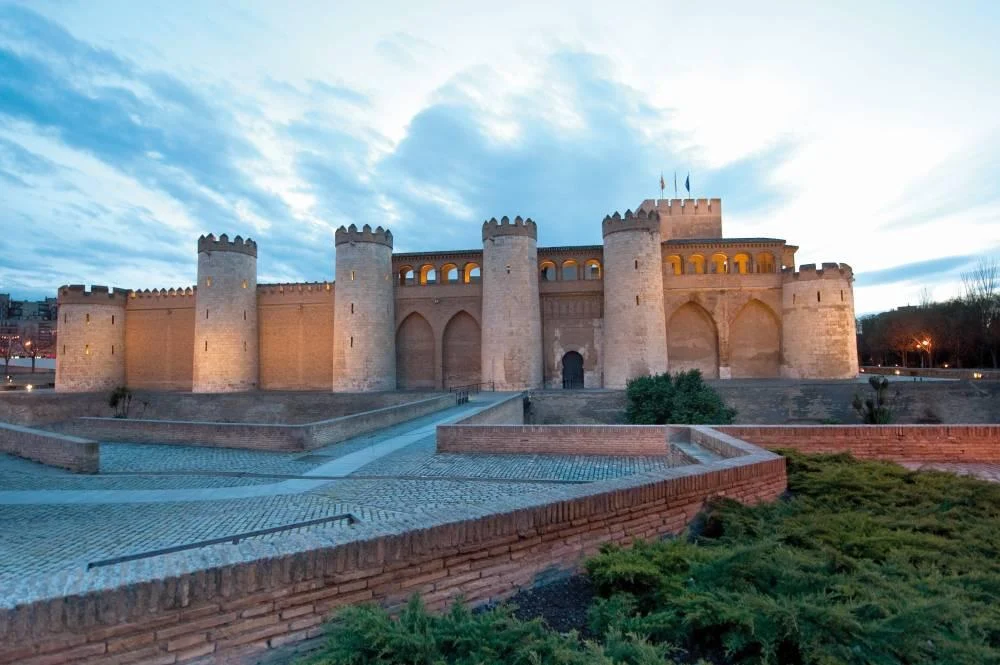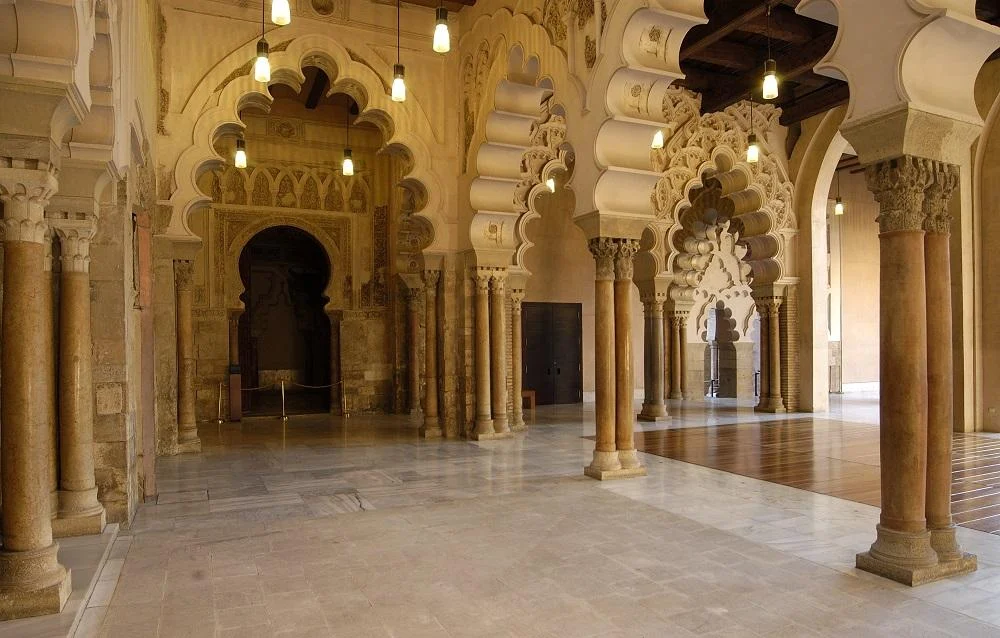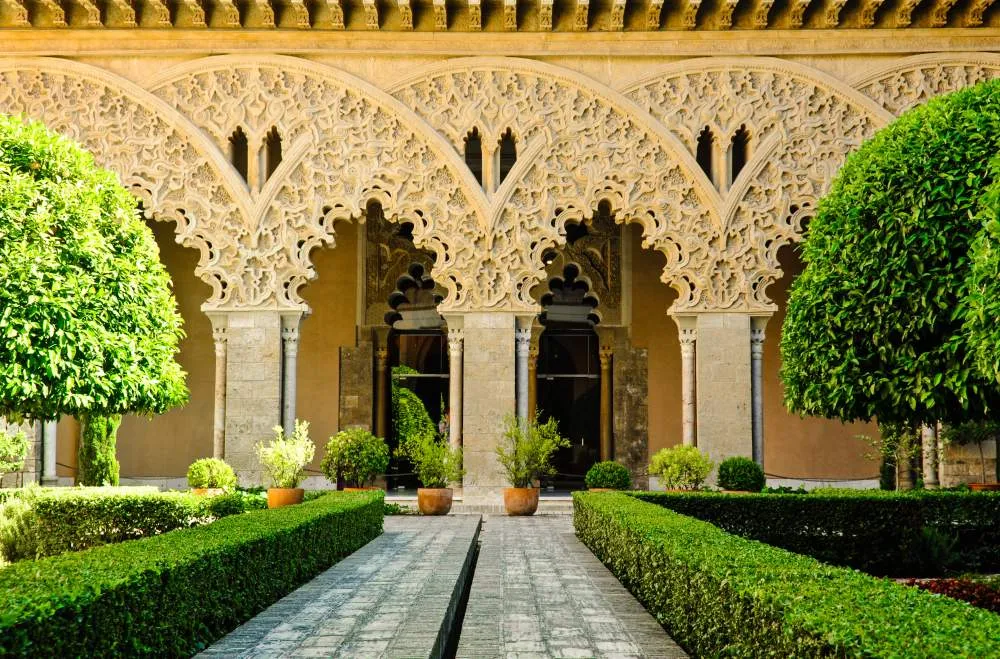Aljaferia Palace (Palacio de la Aljafería) It was the recreational residence of the Muslim kings and reflects the splendor achieved by the Taifa kingdom at its political and cultural peak. It has been a fortified enclosure, Aragonese royal residence, headquarters and prison of the Inquisition, palace of the Catholic Monarchs, barracks and, since 1987, the new headquarters of the Cortes de Aragón.
 |
| Aljaferia Palace |
The Aljaferia Palace - Built in the 11th century as a pleasure palace for the Muslim kings who ruled the Taifa of Sarakusta.
Ten centuries later, that palace of joy that the Muslim monarch Al-Muqtadir dreamed of continues to be, together with the Alhambra in Granada and the Mosque of Córdoba, one of the artistic jewels of the Muslim presence in southern Europe. UNESCO, in 2001, declared the Mudejar art of Aragon a World Heritage Site, highlighting that the Aljafería Palace is one of the most representative Mudejar monuments, which has become the symbol of Aragonese civil architecture and, probably one of the obligatory references in Spanish history and culture.
 |
| Aljaferia Palace |
When you access the monument, you will find the beautiful arches of the Islamic palace, which contrast with the imposing presence of the Troubadour tower, but you will also visit the medieval palace of the Kings of Aragon.
 |
| Aljaferia Palace |
The Aljaferia Palace has experienced various vicissitudes, changes and stages. Many Aragonese still remember its status as a barracks in the 20th century, but today it is a living and open building, a cultural reference that shows its long history and welcomes within its walls the institution that represents all Aragonese: Las Cortes de Aragón.
